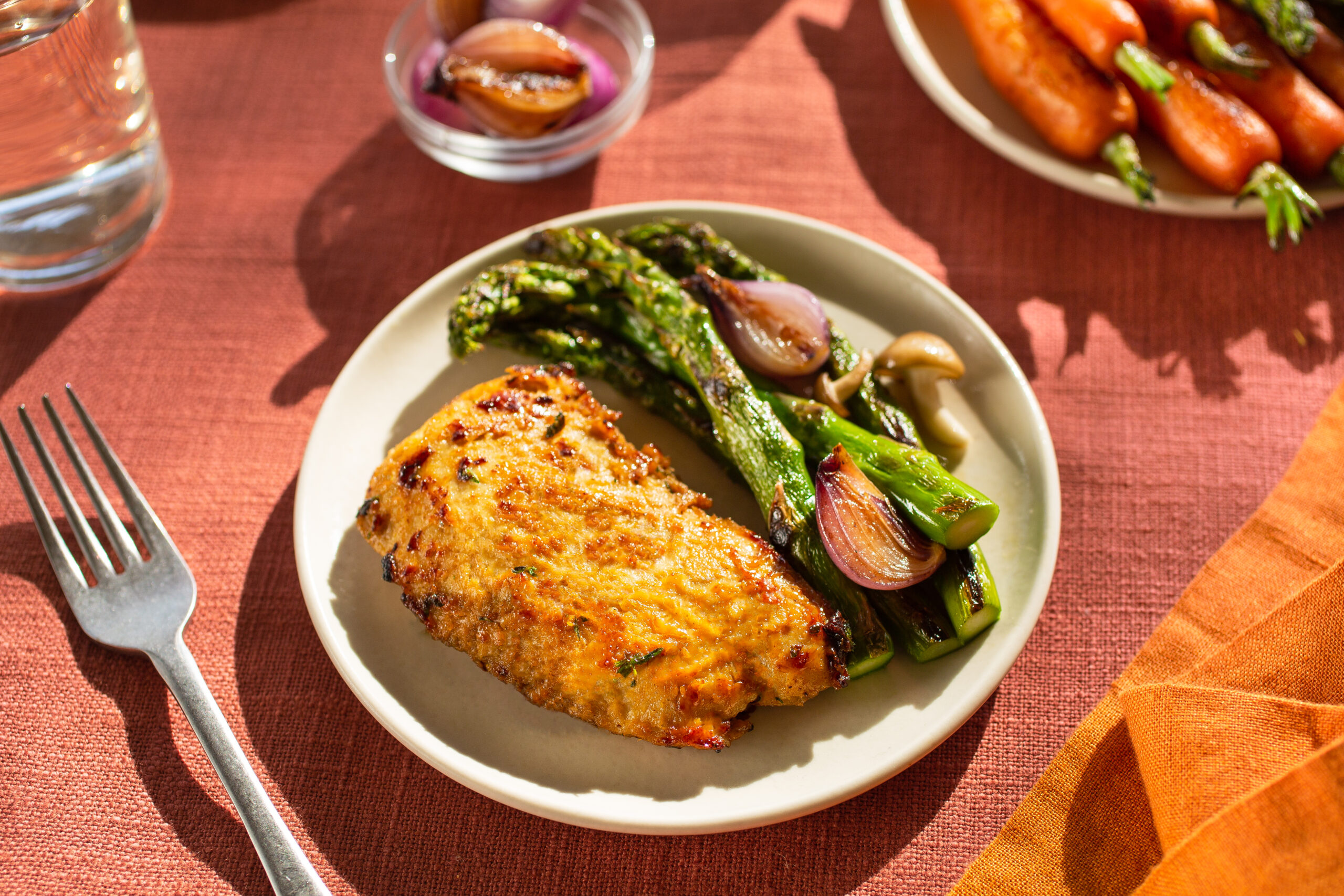Two Bay Area companies were granted federal approval Wednesday to sell chicken made from animal cells—opening the door for “lab-grown” meat to make its way to the nation’s restaurant tables and eventually, supermarket shelves. What’s more, San Francisco looks to be one of the first places Americans will have the chance to try this futuristic protein.
The U.S. Department of Agriculture gave the green light to Upside Foods and Good Meat—headquartered in Berkeley and Alameda, respectively—to sell the meat, which is produced without slaughtering animals. Both local firms had been racing to be the first in the U.S. to bring what is often referred to as “cell-cultivated” or “cultured” meat to American consumers.
The move heralds a new era of meat production aimed at eliminating harm to animals and drastically reducing the environmental impacts of grazing, growing feed for animals and animal waste.
“Instead of all of that land and all of that water that’s used to feed all of these animals that are slaughtered, we can do it in a different way,” said Josh Tetrick, co-founder and chief executive of Eat Just, which operates Good Meat.
The companies received approvals for federal inspections required to sell meat and poultry in the U.S., paving the way for new age of lab-to-table dining. But don’t look for this novel meat in U.S. grocery stores anytime soon. Cultivated chicken is much more expensive than the real thing and cannot yet be produced on the scale of traditional meat, said Ricardo San Martin, director of the Alt:Meat Lab at University of California Berkeley.
As such, the companies plan to serve the new food first in exclusive restaurants. Upside has partnered with Bar Crenn. The upscale cocktail lounge, located next door to the three-Michelin-starred Atelier Crenn in Cow Hollow is certainly no stranger to trying new things. In May, the 12-year-old French restaurant debuted a program that provides guaranteed reservations to its members—for the hefty price of $3,800 annually. Good Meat dishes will be served at a Washington, D.C., restaurant run by chef and owner Jose Andrés.
The approval came months after the U.S. Food and Drug Administration deemed that products from both companies are safe to eat. A manufacturing company called Joinn Biologics, which works with Good Meat, was also cleared to make the products.
Officials from both companies are quick to note the products are meat, not substitutes like the Impossible Burger or offerings from Beyond Meat, which are made from plant proteins and other ingredients.
Cultivated meat is grown in steel tanks, using cells that come from a living animal, a fertilized egg or a special bank of stored cells. In Upside’s case, it comes out in large sheets that are then formed into shapes like chicken cutlets and sausages. Good Meat, which already sells cultivated meat in Singapore, the first country to allow it, turns masses of chicken cells into cutlets, nuggets, shredded meat and satays.
Globally, more than 150 companies are focusing on meat from cells, not only chicken but also pork, lamb, fish and beef, which scientists say has the biggest impact on the environment.
Upside, based in Berkeley, operates a 70,000-square-foot building in nearby Emeryville. On a recent Tuesday, visitors entered a gleaming commercial kitchen where chef Jess Weaver was sauteeing a cultivated chicken filet in a white wine butter sauce with tomatoes, capers and green onions.
The finished chicken breast product was slightly paler than the grocery store version. Otherwise it looked, cooked, smelled and tasted like any other pan-fried poultry.
“The most common response we get is, ‘Oh, it tastes like chicken,’” said Amy Chen, Upside’s chief operating officer.
Good Meat, based in Alameda, operates a 100,000-square-foot plant, where chef Zach Tyndall dished up a smoked chicken salad on a sunny June afternoon. He followed it with a chicken “thigh” served on a bed of potato puree with a mushroom-vegetable demi-glace and tiny purple cauliflower florets. The Good Meat chicken product will come precooked, requiring only heating to use in a range of dishes.
But, the question remains: Will people actually eat it? Only time will tell. If you need help making up your mind, read The Standard’s primer on the brave new world of cultured meat.
